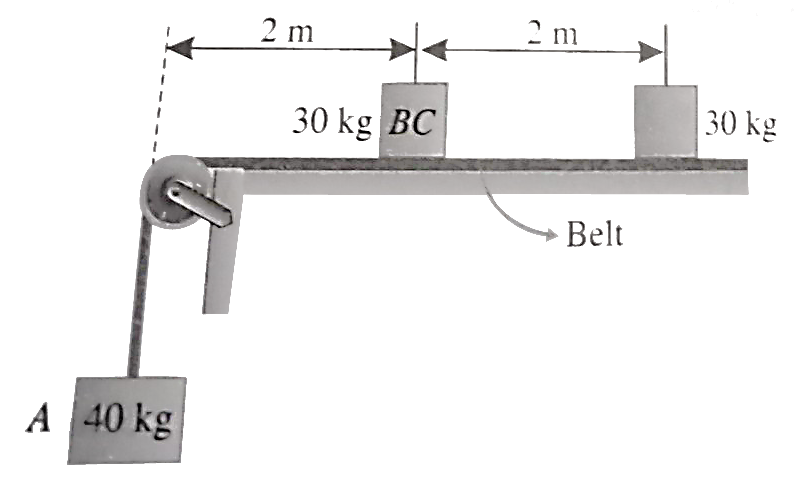
Two 30 kg blocks rest on a massless belt which passes over a fixed pulley and is attached to a 40 kg block. If coefficient of friction between the belt and the table as well as between the belt and the blocks B and C is μ and the system is released from rest from the position shown, the speed with which the block B falls off the belt is
2√2ms if μ=0.2
√2ms if μ=0.2
2ms if μ=0.5
2.5ms if μ=0.5
The correct Answer is:A, C

Maximum possible acceleration of block will be =μg
(i) When μ=0.2 maximum acceleration possible so that blocks does not slip is 2ms2. Now acceleration of system assuming blocks don't slip is
As 3.8>2 hence the assumption is wrong and blocks slip on the belt.
Maximum force applicable on block B is μmg
Acceleration of block=2ms2
Hence velocity of B when it strikes pulley is V2=02+2×2×2
V2=8
V=2√2ms
Hence (a).
(ii) When μ=0.5 maximum acceleration possible so the block dows not slip is 5ms2
Now acceleration of system assuming blocks don't slip is
a=40g−2μmg100=1ms2
μ=0.5
as 1<5 hence, blocks do not slip and acceleration of block B is 1ms2
hence velocity of B when it strikes pulley is
V2=02+2.1.2
V2=4
V=2ms
Hence (c).
Similar Questions
Two blocks A & B are connected by a light inextensible string passing over a fixed smooth pulley as shown in the figure. The coefficient of friction between the block A and the horizontal table is μ=0.2. If the block A is just to slip, find the ratio of the masses of the blocks.
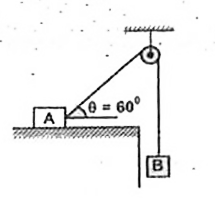 View Solution
View SolutionConsider the system shown in the figure. Coefficient of friction between the block and table is μ=0.5. The system is released from rest. Find the work done by friction, when the speed of block is 10 m/s (m=1kg)
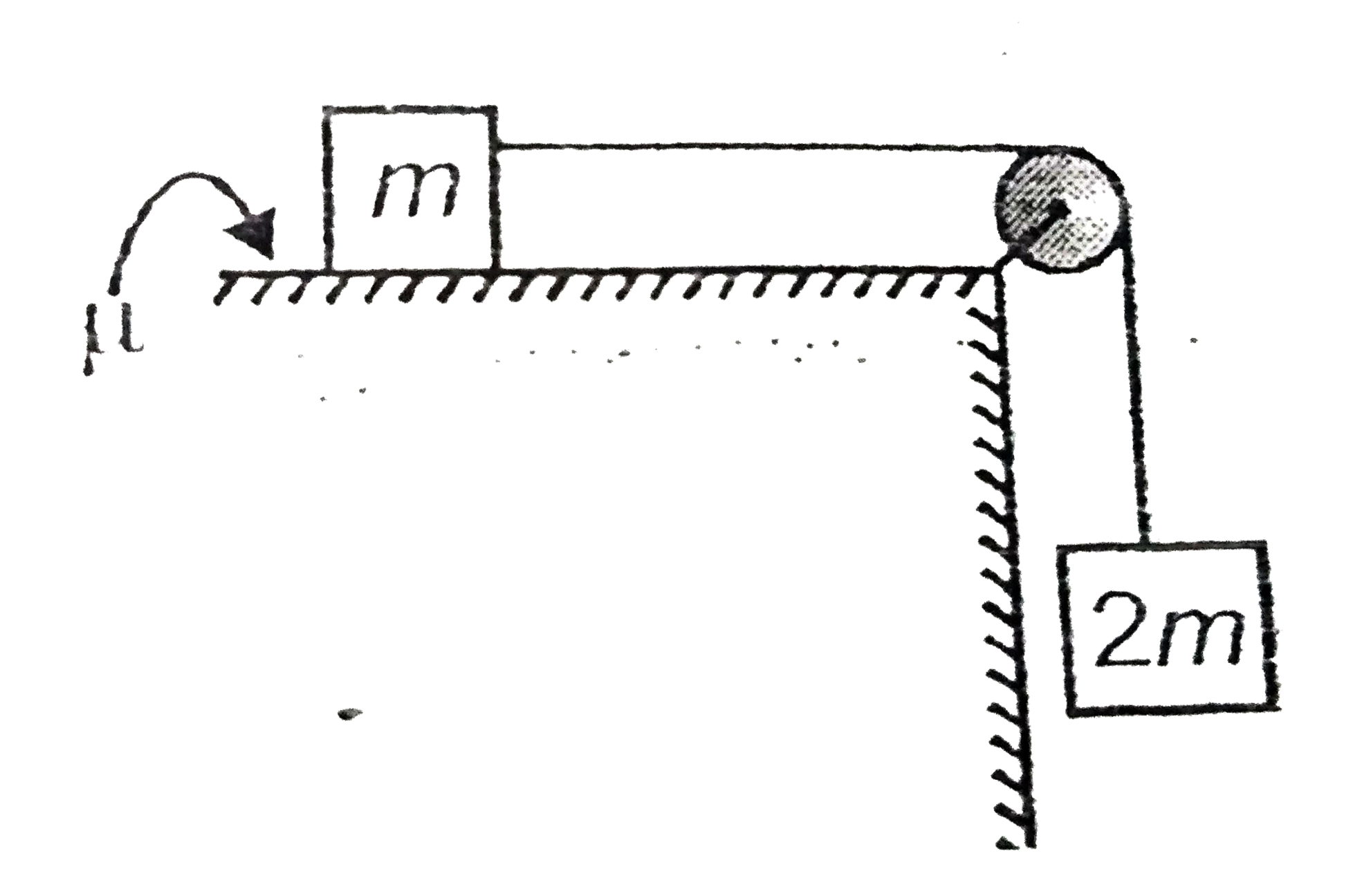 View Solution
View Solution
Knowledge Check
- Question 1 - Select One
The coefficient of friction between the block A of mass m & block B of mass 2m is μ. There is no friction between A&B is released from rest & there is no slipping between A&B then:
 A2θ≤sin−1(2μ)Bθ≤tan−1(μ)C2θ≤cos−1(2μ)D2θ≤tan−1(μ/2)
A2θ≤sin−1(2μ)Bθ≤tan−1(μ)C2θ≤cos−1(2μ)D2θ≤tan−1(μ/2) - Question 2 - Select One
Two blocks A and B are connected by a light inextensible string passing over a fixed smooth pulley as shown in figure The coefficient of friction between the block A and B the horizontal table is μ=0.5. If the block A is just , find ratio of the masses of the blocks
 A125B115C135D175
A125B115C135D175 - Question 3 - Select One
The coefficient of friction between the block A of mass m & block B of mass 2m is μ. There is no friction between block B & the inclined plane. If the system of blocks A & B is released from rest & there is no slipping between A & B then :
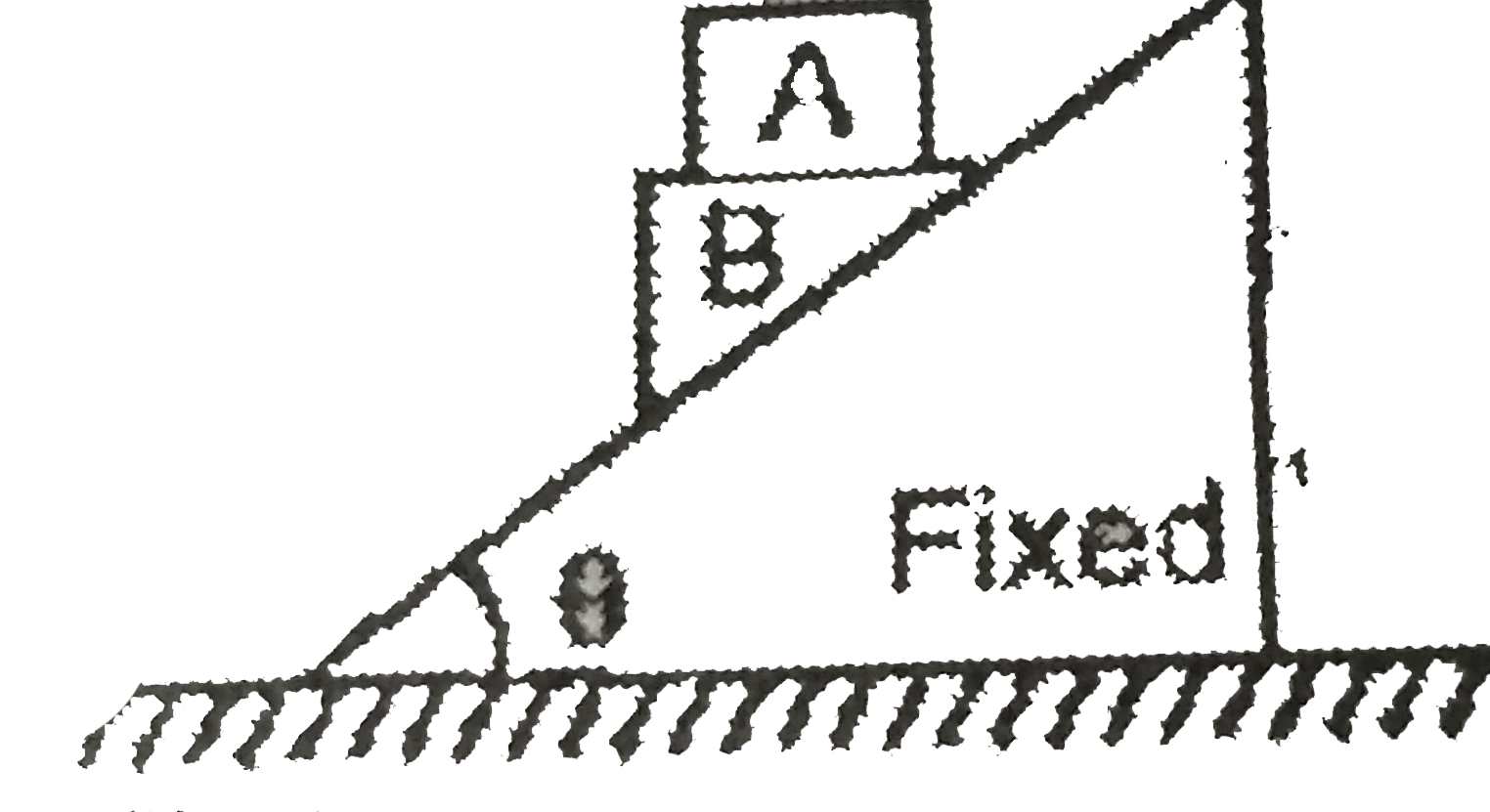 A2θ<sin−1(2μ)Bθ<tan−1(μ)C2θ<cos−1(2μ)D2θ<tan−1(μ/2)
A2θ<sin−1(2μ)Bθ<tan−1(μ)C2θ<cos−1(2μ)D2θ<tan−1(μ/2)
consider the situation shown in figure in which a block 'A' of mass 2 kg is placed over a biock.'B' of mass 4 kg. The combination of the blocks are placed on a inclined plane of inclination 37∘ with horizontal. The coefficient of friction between block B and inclined plane is μ2 and in between the two, blocks is μ1. The system is released from rest.
(Take g=10m/sec2)

In the previous question the frictional force between block B and plane is :View Solutionconsider the situation shown in figure in which a block 'A' of mass 2 kg is placed over a biock.'B' of mass 4 kg. The combination of the blocks are placed on a inclined plane of inclination 37∘ with horizontal. The coefficient of friction between block B and inclined plane is μ2 and in between the two, blocks is μ1. The system is released from rest.
(Take g=10m/sec2)

The frictional force acting between the two blocks in the previous question is :View Solutionconsider the situation shown in figure in which a block 'A' of mass 2 kg is placed over a biock.'B' of mass 4 kg. The combination of the blocks are placed on a inclined plane of inclination 37∘ with horizontal. The coefficient of friction between block B and inclined plane is μ2 and in between the two, blocks is μ1. The system is released from rest.
(Take g=10m/sec2)
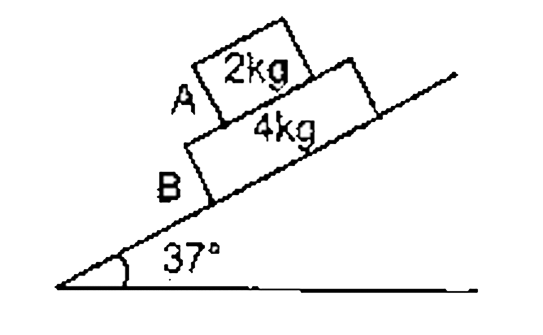
The frictional force acting between the blocks in the previous case :View Solutionconsider the situation shown in figure in which a block 'A' of mass 2 kg is placed over a biock.'B' of mass 4 kg. The combination of the blocks are placed on a inclined plane of inclination 37∘ with horizontal. The coefficient of friction between block B and inclined plane is μ2 and in between the two, blocks is μ1. The system is released from rest.
(Take g=10m/sec2)

The frictional force acting between the blocks in the previous case will be:View SolutionConsider the situation shown in figure in which a book 'A' of mass 2kg is placed over a block 'B' of mass 4kg. The combination of the placed on a inclined plane of inclination 37∘ with horizontal. The coefficient of friction between blocks B and inclined plane is μ2 and in between the two bolcks is μ1, The system is released from rest.
( Take g=10m/sec2)
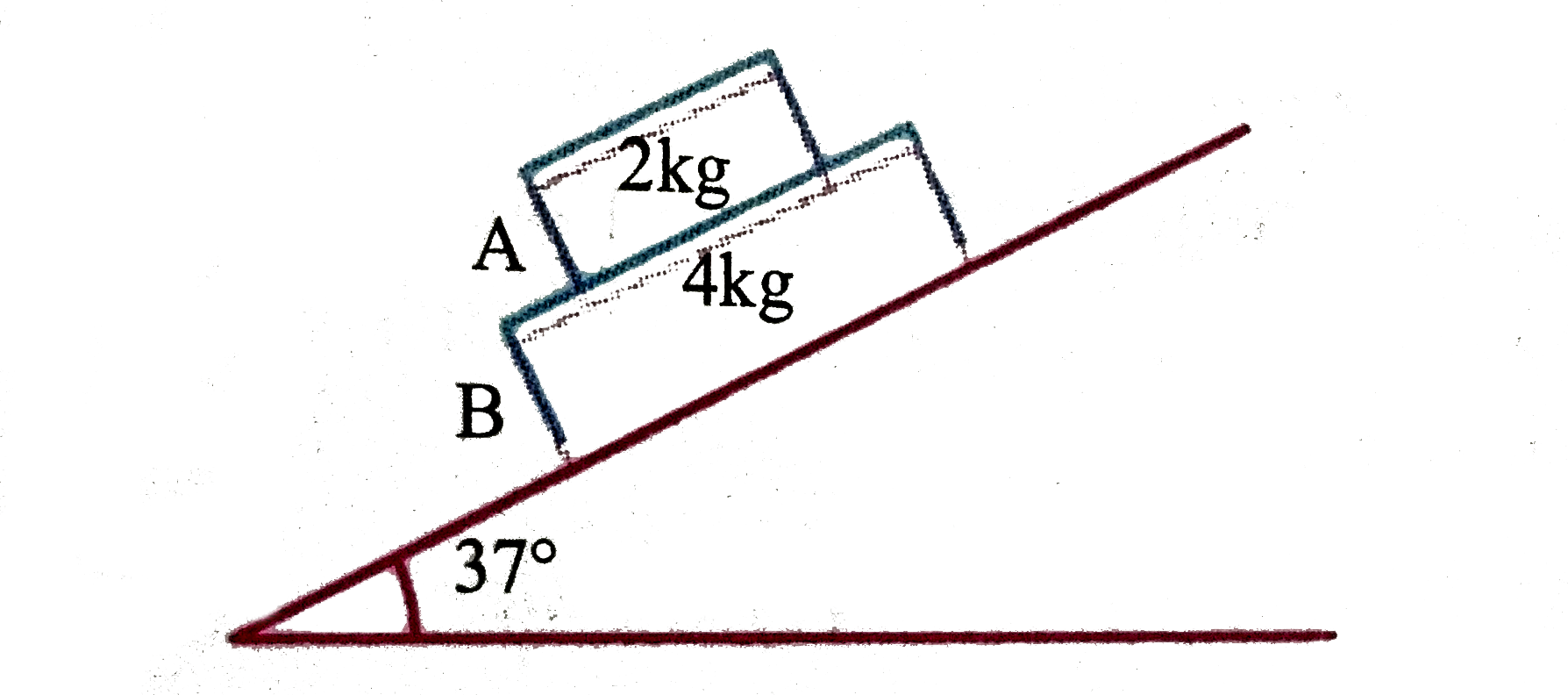
In the previous question the frictional force between block B and plane is:View Solution

